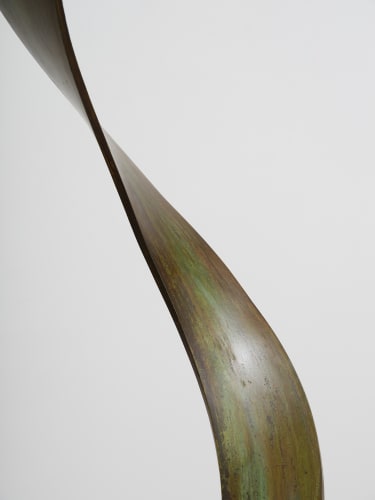Ray Haydon (b.1950 Aotearoa, New Zealand) is an artist and sculptor with a career spanning more than twenty years. Responding intuitively to space, the artist creates works of refinement and precision. His pieces retain a lyricism and freedom of line that evoke a sense of movement and velocity, as well as celebrate the technical process that goes into their making.
In the same spirit of Constructivists like Naum Gabo, Haydon is constantly testing the variable ways that his sculptures can take on extraordinary new forms. Through an innate understanding of the mediums with which he works, the artist plays with pure materiality and shape to maximise spatial dynamics. His works embody a theatricality and tension in their defiance of gravity and physical illusionism that is both confounding and captivating.
Dr Andrew Paul Wood discusses the importance of the line in Haydon’s work; referencing Paul Klee’s ‘taking a line for a walk’ but also highlighting the negative space that Haydon’s sculptures delineate.[1] Haydon often describes the ‘simple flowing lines’ of his sculptures and the space that the works ‘create’. He likes the idea of a person walking around his works, the sculpture changing or morphing as it is being viewed.[2]
A celebration of each of his selected materials is evident in Haydon’s practice; whether bronze, corten steel, stainless steel, wood, carbon fibre or veneer. The artist actively ‘paints the air’ with his works, his labors realising into form, colour, and rhythm in a dynamic dance through space.
[1] & [2] Wood, A.P Interview with Haydon, R. (2023, September). Dancing with Materials, ArtZone Magazine, Spring 23, Issue 96, p 56-57.
